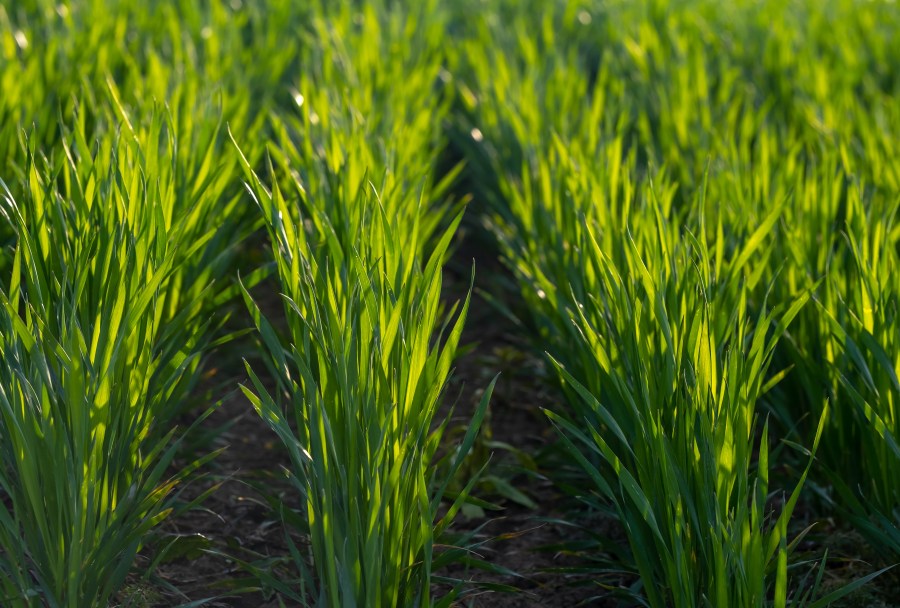Concerns regarding the leaching of residual nutrition in soils have continued into spring as the weather refuses to provide a reprieve.
As a result, regular applications of key nutrients, particularly nitrogen, have become the priority for many. QLF Agronomy’s David Maxwell says furthermore, a foliar approach will be highly efficient at feeding plants this season because it bypasses using soil as a vector.
“A lot of residual nutrition has been lost throughout the winter due to regular rainfall events and flooding. Also, some of those early spring fertiliser applications may have been less efficient than anticipated due to continuing rain.
“But a benefit of applying foliarly is that it usually delivers 2-4 times greater efficiency than soil-based, but more has been seen in certain scenarios,” he explains.
Role of carbon
Although the focus has centred around essential nutrient nitrogen, David highlights the role of carbon. “Adding a carbon source to any foliar feed helps with adsorption as it binds the nutrients to enhance uptake and reduce the chance of lock-up.
“When added to foliar nitrogen, carbon plays a particularly important role in protein synthesis and is a requirement to build amino acids from urea.
“Equally, if we’re providing carbon to a plant through a foliar application, it doesn’t have to run down its own stocks,” says David.
L-CBF Boost
Primarily known for its properties as a microbe and fungi food, L-CBF Boost is in fact a liquid carbon-based fertiliser. Alongside its sister product L-CBF Terra Fed (for the organic market), L-CBF Boost can be added to foliar sprays at 10 l/ha for cereals, oilseed rape, potatoes and grassland. For maize, increased levels are required (30% of nitrogen fertiliser applied).
David says the carbon from the molasses in both products is used by all aspects of the soil food web supporting the health and productivity of the soil. “Many soil scientists are now recommending applying a carbon source with nitrogen fertilisers. L-CBF Boost is a proven product with many years’ worth of independent trial results and on farm success,” he adds.
Such trial results include work undertaken by NIAB which evaluated the impact of L-CBF Boost on the grain yield of winter wheat when applied to compliment varying nitrogen regimes (150kgN/ha or 200kgNha total).
The greatest yield across treatments was seen when L-CBF Boost was applied at GS25 and GS32, alongside a 200kgN/ha regime – 10.12t/ha compared with 9.34t/ha for the nitrogen alone (+0.78t/ha). Equally, when applied at the same two growth stages but within a 150kgN/ha regime, the crop yielded 9.21t/ha versus 8.16t/ha for the nitrogen alone (+1.05t/ha).
All in one
To simplify nutritional approaches further, QLF Agronomy has launched a range of pre-mixed products. “We can offer our L-CBF range incorporated within a liquid fertiliser at the point of manufacture. This allows a hassle-free, pre-mixed product, specifically formulated to match crop requirement but with added carbon,” explains David.
These include T L17 and TL 30 – urea-based fertilisers with the inclusion of L-CBF Boost. “There’s also Amino 5 which is similar to TL 30 but with amino acids added for even better results. This can be used on all cropping at 30-50 l/ha,” he says.
Grower testimonial
Farm manager for Wheatsheaf Farming in Hampshire, David Miller, has been using L-CBF Boost for around six years. He says a move towards regenerative farming has meant a greater focus on soil health, therefore he caps his nitrogen applications to a total 180kgN/ha.
“The idea is we’re adding a carbon source to the fertiliser to limit the negative effect fertiliser can have on soil biology, which is well documented. As an aside, we see a considerable difference in the amount of scorch – if conditions are sub-optimal and we’re using BOOST, it seems to alleviate the effect,” he says.
For more information, visit www.qlfagronomy.co.uk or call 01952 727754




